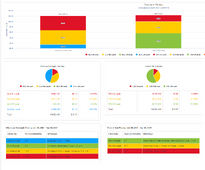petee_c
New Member
Has anyone had problems with their home insurance when they have a DIY Solar Battery bank in their house?
I'm thinking of a solar/load shifting arrangement with supplementation from the grid. Not net-metering.
I'm revisiting solar for my home in Southern Ontario Canada (Lat ~43.5N). I have a large roof, but we have some mature trees around that will shade parts of the roof. Looking at possibly a small E and larger W facing array.
Anyways, looks like our home uses around 900-1300kWh of energy per month. Plus we will have 2 EV's that will require 400-500kWh of charging per month.
Plan:
-stay grid connected and switch to the ultra low EV rate for 11pm-7am charging (~$0.03/kWh); also use the grid to charge the battery bank (14-28kWh) size overnight to use in the house the next day. This will happen daily in the winter months.
- 'smaller' solar array on the roof, will charge the battery during the day spring thru fall.
- run most of/all of the house on the battery/solar during the day.
I think battery prices have come down enough, that I can get decent payback by doing a smaller solar array/ decent size battery, and load shifting and running most of my house on energy stored from the 'cheap' EV overnight rate.
Looking for a solar inverter/charger that can also take power from the grid at set times to top up the battery if needed. Something with a CSA or UL or cUL rating
right now batteryhookup has 4 new Grade A 280Ah cells available for $450USD. I could get enough sells to build a 48V 280Ah battery for $1800USD plus shipping. That's 13.5kWh. $3600USD would get me 27kWh, which might be enough to run my whole house for 16hrs/day.
I'm thinking of a solar/load shifting arrangement with supplementation from the grid. Not net-metering.
I'm revisiting solar for my home in Southern Ontario Canada (Lat ~43.5N). I have a large roof, but we have some mature trees around that will shade parts of the roof. Looking at possibly a small E and larger W facing array.
Anyways, looks like our home uses around 900-1300kWh of energy per month. Plus we will have 2 EV's that will require 400-500kWh of charging per month.
Plan:
-stay grid connected and switch to the ultra low EV rate for 11pm-7am charging (~$0.03/kWh); also use the grid to charge the battery bank (14-28kWh) size overnight to use in the house the next day. This will happen daily in the winter months.
- 'smaller' solar array on the roof, will charge the battery during the day spring thru fall.
- run most of/all of the house on the battery/solar during the day.
I think battery prices have come down enough, that I can get decent payback by doing a smaller solar array/ decent size battery, and load shifting and running most of my house on energy stored from the 'cheap' EV overnight rate.
Looking for a solar inverter/charger that can also take power from the grid at set times to top up the battery if needed. Something with a CSA or UL or cUL rating
right now batteryhookup has 4 new Grade A 280Ah cells available for $450USD. I could get enough sells to build a 48V 280Ah battery for $1800USD plus shipping. That's 13.5kWh. $3600USD would get me 27kWh, which might be enough to run my whole house for 16hrs/day.



